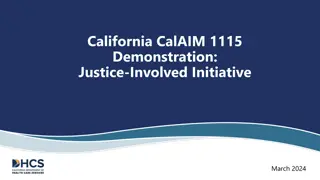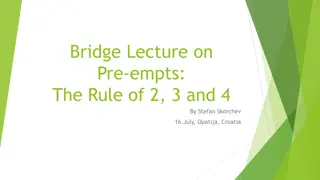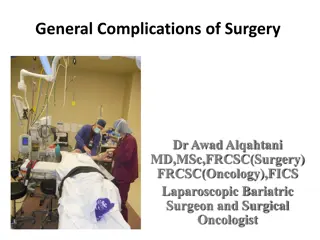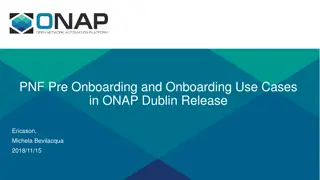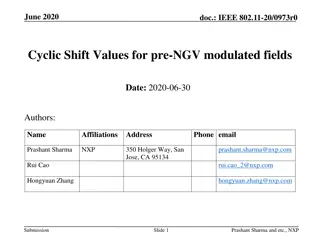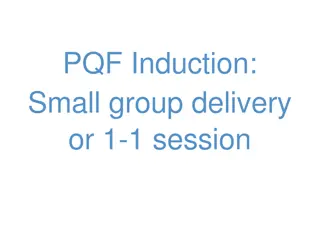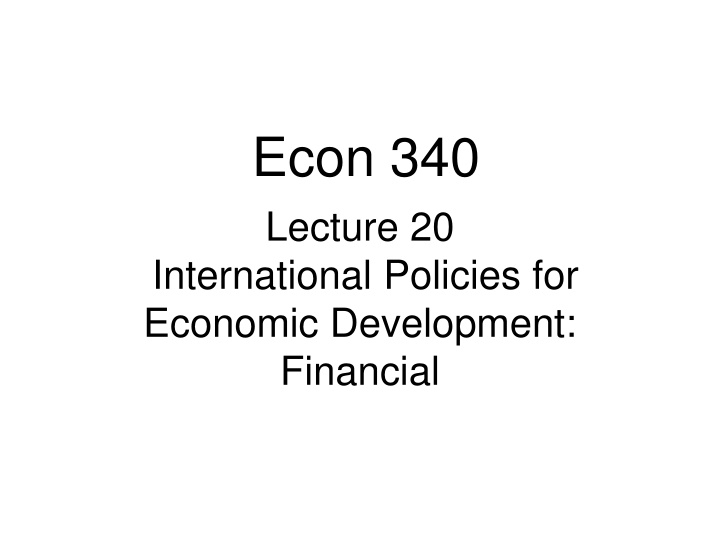
International Policies for Economic Development: Financial Issues and Solutions
Explore the challenges and strategies related to international policies for economic development, focusing on financial aspects such as exchange rate regimes, capital movements, debt problems, crises, and support mechanisms. Delve into the complexities of managing exchange rates, capital flows, and external assistance for developing countries. Gain insights into the pros and cons of various approaches to financial development.
Download Presentation

Please find below an Image/Link to download the presentation.
The content on the website is provided AS IS for your information and personal use only. It may not be sold, licensed, or shared on other websites without obtaining consent from the author. If you encounter any issues during the download, it is possible that the publisher has removed the file from their server.
You are allowed to download the files provided on this website for personal or commercial use, subject to the condition that they are used lawfully. All files are the property of their respective owners.
The content on the website is provided AS IS for your information and personal use only. It may not be sold, licensed, or shared on other websites without obtaining consent from the author.
E N D
Presentation Transcript
Econ 340 Lecture 20 International Policies for Economic Development: Financial
Lecture 20 Outline: International Policies for Economic Development: Financial The Issues Choice of Exchange Rate Regime Pros and Cons of Free Capital Movements Debt Problem of the 1980s The Asian Crisis of 1997 Capital Controls (How) Should Others Help? The World Financial Crisis and Developing Countries Econ 340, Deardorff, Lecture 20: Development Finance 2
The Issues Questions for Developing Countries Themselves How to manage exchange rate Whether to restrict capital flows Questions for Others, regarding Developing Countries Pros and Cons of Foreign Aid (next lecture) Bailouts of countries Debt Forgiveness World Bank Lending Econ 340, Deardorff, Lecture 20: Development Finance 3
Lecture 20 Outline: International Policies for Economic Development: Financial The Issues Choice of Exchange Rate Regime Pros and Cons of Free Capital Movements Debt Problem of the 1980s The Asian Crisis of 1997 Capital Controls (How) Should Others Help? The World Financial Crisis and Developing Countries Econ 340, Deardorff, Lecture 20: Development Finance 4
Choice of Exchange Rate Regime Problems Floating rate: Temptation to inflate (This has led countries to use a pegged rate instead, using the peg as an anchor to lock in low inflation) Pegged rate: Tendency to become overvalued (because they are tempted to have inflation anyway) Subject to exchange-rate crises Econ 340, Deardorff, Lecture 20: Development Finance 5
Choice of Exchange Rate Regime There is no easy answer My recommendation: combination of Floating exchange rate Responsible monetary policy How can this be assured? Independent central bank Econ 340, Deardorff, Lecture 20: Development Finance 6
Lecture 20 Outline: International Policies for Economic Development: Financial The Issues Choice of Exchange Rate Regime Pros and Cons of Free Capital Movements Debt Problem of the 1980s The Asian Crisis of 1997 Capital Controls (How) Should Others Help? The World Financial Crisis and Developing Countries Econ 340, Deardorff, Lecture 20: Development Finance 7
Pros and Cons of Free Capital Movements Efficiency Gains If return to capital in developing countries is higher than in developed countries Then capital should flow into them Gains are analogous to the gains from trade and gains from migration (You) Could draw supply and demand curves for capital in two countries. Measure the effects (gains and losses) of capital flows as we did for migration. Econ 340, Deardorff, Lecture 20: Development Finance 8
Pros and Cons of Free Capital Movements Costs of international capital movements (See Crook) Capital markets are more prone to mistakes than goods markets: values depend on the future, which is hard to know The use of leverage (borrowing to finance a purchase) increases risk (borrowers can gain more, but can also lose more than the value of their own wealth) Borrowing across currencies adds additional risk of exchange-rate change All these create a potential for crisis that does not arise with trade in goods Econ 340, Deardorff, Lecture 20: Development Finance 9
Pros and Cons of Free Capital Movements Vulnerability to Crisis Some capital is very liquid ( Liquid means readily converted into cash ) Bonds can be sold Bank deposits can be withdrawn Liquid capital that flows into a country may just as easily flow back out, if investors fear Default (nonpayment by debtors) Exchange Depreciation (reducing value of loan or ability to repay) If that happens, a developing country that relied on foreign capital is suddenly in big trouble. This has happened repeatedly: The debt problems of the 1980s The Asian crisis of 1997 Greece et al. in 2010-12-?; Cyprus 2013 Econ 340, Deardorff, Lecture 20: Development Finance 10
Lecture 20 Outline: International Policies for Economic Development: Financial The Issues Choice of Exchange Rate Regime Pros and Cons of Free Capital Movements Debt Problem of the 1980s The Asian Crisis of 1997 Capital Controls (How) Should Others Help? The World Financial Crisis and Developing Countries Econ 340, Deardorff, Lecture 20: Development Finance 11
Debt Problem of the 1980s Sources of the Problem Developing countries interest rates are normally high, for two reasons: Productivity of capital is high because it is scarce Development projects are risky, so borrowers pay a premium To deal with resulting shortage of investment, developing-country governments either Did the borrowing from abroad themselves, or Guaranteed the loans to private borrowers Econ 340, Deardorff, Lecture 20: Development Finance 12
Debt Problem of the 1980s Sources of the Problem The Role of Oil Oil prices rose in the 1970s OPEC (=Organization of Petroleum Exporting Countries) Earned dollars for their oil Made loans to developed countries Developed countries, in turn, made loans to developing countries Called recycling petrodollars Result: Developing-country debt grew very large by the end of the 1970s Econ 340, Deardorff, Lecture 20: Development Finance 13
Debt Problem of the 1980s Sources of the Problem Servicing debt became harder in the 1980s, due to Recession of 1980-81 Which reduced exports Appreciation of the US dollar A problem because debts were denominated in dollars Developing country inflation and resulting currency overvaluation Econ 340, Deardorff, Lecture 20: Development Finance 14
Debt Problem of the 1980s Who did this happen to? Latin America, especially How did they deal with it? Rescheduling loans (= reducing payments) Effect afterwards: Made it more difficult for them to borrow afterwards, hurting their investment and growth for many years The Lost Decade of the 1980s. Econ 340, Deardorff, Lecture 20: Development Finance 15
Lecture 20 Outline: International Policies for Economic Development: Financial The Issues Choice of Exchange Rate Regime Pros and Cons of Free Capital Movements Debt Problem of the 1980s The Asian Crisis of 1997 Capital Controls (How) Should Others Help? The World Financial Crisis and Developing Countries Econ 340, Deardorff, Lecture 20: Development Finance 16
The Asian Crisis of 1997 Who experienced the Asian crisis, and when: Country Currency Thailand Baht Philippines Peso Malaysia Ringgit S. Korea Won Indonesia Rupiah When crisis hit Jul 1997 Jul 1997 Oct 1997 Nov 1997 Dec 1997 Econ 340, Deardorff, Lecture 20: Development Finance 17
The Asian Crisis of 1997 Characteristics of countries before the crisis Mostly pegged exchange rates Open capital markets Current account deficits, but not large Rapidly growing economies Not particularly irresponsible fiscally Econ 340, Deardorff, Lecture 20: Development Finance 18
The Asian Crisis of 1997 What happened Loss of confidence in their currencies Capital outflows Speculative attack Devaluation Recession Econ 340, Deardorff, Lecture 20: Development Finance 19
The Asian Crisis of 1997 Econ 340, Deardorff, Lecture 20: Development Finance 20
The Asian Crisis of 1997 What has happened since (See Kharas) Rapid recovery: pre-crisis levels of income were regained by 1999 in Korea, Malaysia, and Philippines by 2003 in Thailand and Indonesia, who had been hit hardest. This is faster than the recovery from the earlier Latin American debt crisis, which took a decade Exports led the recovery Econ 340, Deardorff, Lecture 20: Development Finance 21
The Asian Crisis of 1997 What has happened since The countries have changed a lot They are now more open (tariffs now less than 5%) Shift from diversification to specialization More integrated with the regional economy (i.e., China) More R&D Educated workers Urban Financing shifted from banks to capital markets Econ 340, Deardorff, Lecture 20: Development Finance 22
The Asian Crisis of 1997 What has happened since There are, however, stresses Rapid migration Not to the largest cities But to small and medium cities Politics in these cities can t keep up They lack local officials with experience Result is corruption Econ 340, Deardorff, Lecture 20: Development Finance 23
Lecture 20 Outline: International Policies for Economic Development: Financial The Issues Choice of Exchange Rate Regime Pros and Cons of Free Capital Movements Debt Problem of the 1980s The Asian Crisis of 1997 Capital Controls (How) Should Others Help? The World Financial Crisis and Developing Countries Econ 340, Deardorff, Lecture 20: Development Finance 24
Capital Controls Definition: Capital Controls = government restrictions on financial transactions, into and/or out of the country Or, from Forbes: various laws and regulations that restrict foreign investment in such areas as stock markets, banks and domestic firms Econ 340, Deardorff, Lecture 20: Development Finance 25
Capital Controls Arguments in favor: Reduce liquidity and prevent crises. Prevent contagion (speculative attacks prompted by crises in similar countries) Infant industry protection for financial firms Free governments to pursue needed financial reforms Econ 340, Deardorff, Lecture 20: Development Finance 26
Capital Controls Costs (see Forbes): Increase financing costs for domestic firms. Induce market-distorting behaviors to avoid the costs of controls, or evade them. Insulate markets from competition Difficult and costly to enforce In Chile: caused investment in small companies to plummet Whom do they hurt most? Small firms, who suffer from shortage of capital Econ 340, Deardorff, Lecture 20: Development Finance 27
Capital Controls Arguments against: Deprives firms of ability to borrow, and/or raises the cost to them of borrowing Protects inefficient firms, much like tariffs Econ 340, Deardorff, Lecture 20: Development Finance 28
Lecture 20 Outline: International Policies for Economic Development: Financial The Issues Choice of Exchange Rate Regime Pros and Cons of Free Capital Movements Debt Problem of the 1980s The Asian Crisis of 1997 Capital Controls (How) Should Others Help? The World Financial Crisis and Developing Countries Econ 340, Deardorff, Lecture 20: Development Finance 29
(How) Should Others Help? Bailouts = give country money when a crisis occurs or looms. Pro: Avoid crisis, and the resulting harm Con: Discourages reforms that could prevent future problems Countries come to expect bailout Moral hazard = tendency to act more irresponsibly when adverse consequences are known to be reduced Econ 340, Deardorff, Lecture 20: Development Finance 30
(How) Should Others Help? Debt Forgiveness (see Krueger & Srinivasan) Pro: Reduces burden on poor countries Con: Discourages future lending to poor countries Econ 340, Deardorff, Lecture 20: Development Finance 31
(How) Should Others Help? World Bank Lending (see Lerrick) In the past WB could borrow on much better terms than developing countries It therefore borrowed and made low-interest loans to them It also imposed onerous requirements on them, called technical assistance Econ 340, Deardorff, Lecture 20: Development Finance 32
(How) Should Others Help? World Bank Lending (see Lerrick) Now Developing country credit ratings have improved Technical assistance discourages them from using WB WB still makes loans, but persuades developed countries to pay the interest Econ 340, Deardorff, Lecture 20: Development Finance 33
(How) Should Others Help? World Bank Lending Lerrick (and others) say WB should Stop lending at all Make grants, not loans, to countries whose credit is weak Econ 340, Deardorff, Lecture 20: Development Finance 34
Lecture 20 Outline: International Policies for Economic Development: Financial The Issues Choice of Exchange Rate Regime Pros and Cons of Free Capital Movements Debt Problem of the 1980s The Asian Crisis of 1997 Capital Controls (How) Should Others Help? The World Financial Crisis and Developing Countries Econ 340, Deardorff, Lecture 20: Development Finance 35
The World Financial Crisis and Developing Countries The World Financial Crisis of 2008 Effects of crisis: Spread to developing countries, pushing many back into poverty Growth slowed, falling behind population growth Rising joblessness and closed factories Capital flows into developing countries declined Decline in commodities prices (hurt some, helped others) Econ 340, Deardorff, Lecture 20: Development Finance 36
The World Financial Crisis and Developing Countries Effects were not just due to fall in demand or supply, but due to lack of availability of credit. Even oil exporters were hurting: Drop in oil price Many had borrowed heavily, and loans are hard to roll over However, unexpectedly, many developing countries Had income decline less than developed countries Recovered more quickly Since then have often helped others to recover Econ 340, Deardorff, Lecture 20: Development Finance 37
Next Time International Policies for Economic Development: Aid Why Should We Care? Who Gives Aid? Does Aid Work? Pros and Cons of Aid Policy Recommendations Econ 340, Deardorff, Lecture 20: Development Finance 38





